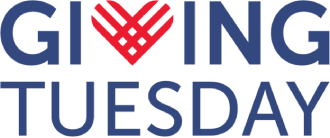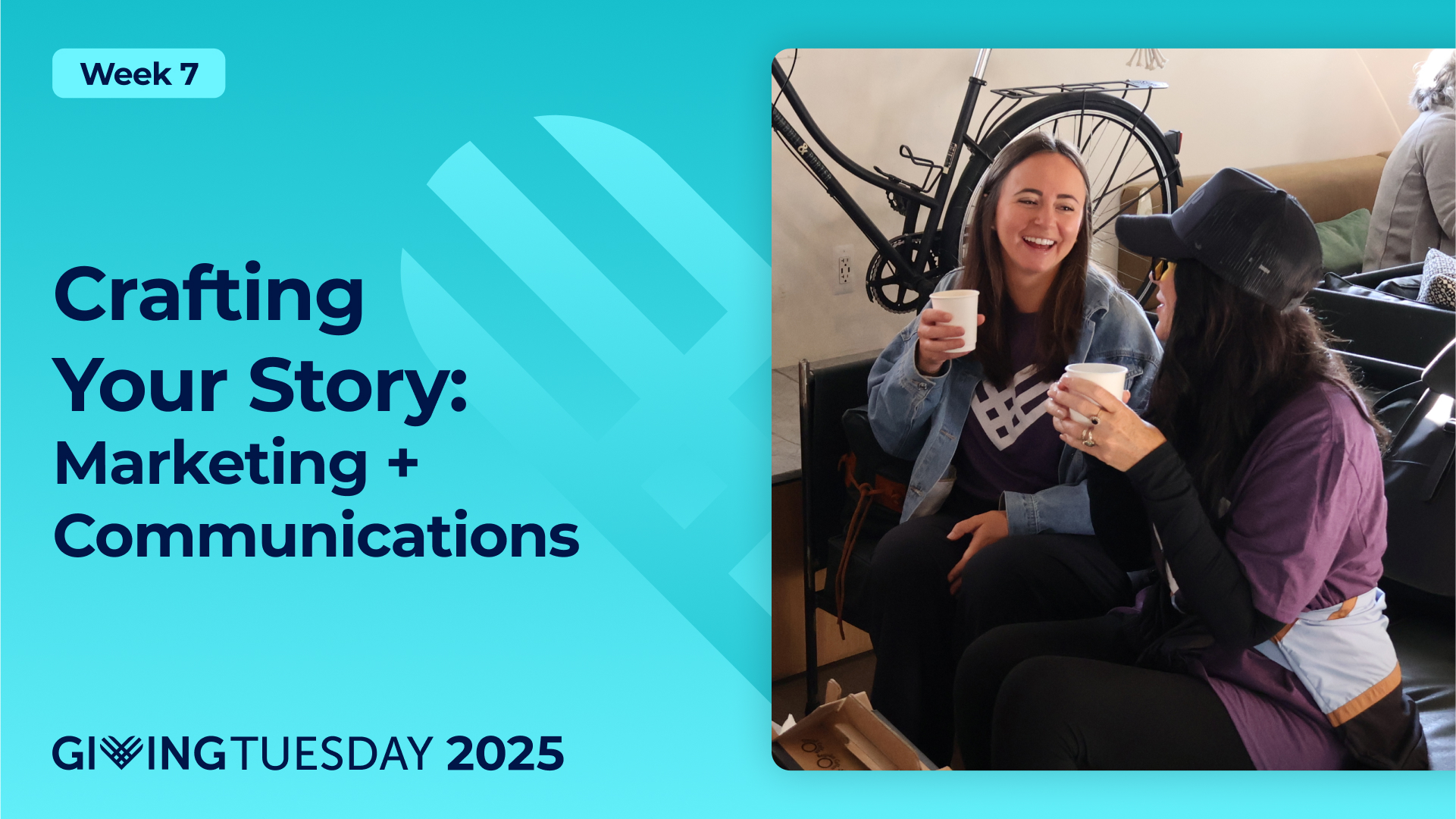Since 2012, we’ve been mission-bound to connect communities through sharing stories of the simple acts of generosity that inspire others to give back.
This impact manifests in so many ways. It’s the person who holds the door for you while you’re running into work, the kind soul who pays for your coffee, or that determined community advocate who is working to solve problems for their neighbors. Generosity shows up everyday, all around us. At GivingTuesday, we have the wonderful task of telling those stories to inspire others to do the same.
Stories of generosity encourage more generosity, and we’re not just saying that. According to GivingTuesday Data Commons reports, simply being aware of GivingTuesday has prompted 86% of people to be more generous. That’s fantastic, however; our work doesn’t start and stop on December 2. This is a year-round movement that requires a consistent flow of inspiration, stories, and actions to spark real change.
Here are 9 tips to boost long-term storytelling campaigns from our team, right here, at GivingTuesday.
“Your GivingTuesday story deserves to reach beyond your existing audience, and local journalists are looking for compelling community stories to share. The key is approaching them with the right story, at the right time, in the right way.”
– Shareeza Bhola, GivingTuesday’s Chief Communications Officer
Three Gips to Guide Your Press Strategy from Shareeza:
Getting media coverage can amplify your GivingTuesday campaign exponentially, but it requires more than just sending out information and hoping for the best. Here are three practical tips to help you build genuine relationships with journalists and earn the coverage your campaign deserves.
1. Stay Curious About the News Cycle
Make reading the news part of your daily routine. The media landscape shifts constantly, and understanding what’s newsworthy will help you identify opportunities for your campaign or organization.
Be a media consumer: Sign up for newsletters from the local news channels, newspapers, news sites, podcasts, or other types of media you’d like to be featured in. Follow journalists on social media, and tune into your local morning TV or evening news. Read both the publications your audience follows and the ones where you’d love to see your story appear. Pay attention to which topics are trending, what angles reporters are exploring, and how stories about nonprofits, community, and giving are being framed. This isn’t just about finding a hook for your pitch; it’s about developing a strong understanding of the media cycle that will serve you in every media interaction.
2. Do Your Homework
Before you reach out to any journalist, invest time in researching their beat. Read articles about giving, your community, or the issues your organization addresses, then identify reporters who are writing about those topics.
Understand reporters’ interests and beats: What topics are they talking about on social media? What stories are they covering? What seems to genuinely interest them? If a reporter exclusively covers local restaurant openings and food trends, your pitch about animal shelter volunteering—no matter how compelling—isn’t relevant to their work. This might seem obvious, but mismatched pitches are one of the fastest ways to damage your credibility. Respect reporters’ time and expertise by only reaching out when you have a story that genuinely fits what they cover.
3. Ditch the Press Release and Send a Short Pitch Instead
Most public relations professionals and journalists agree: press releases are often long, time-consuming, rarely read in full, and don’t guarantee coverage. Instead, try crafting a concise, compelling email pitch that’s about two paragraphs long. Make sure it clearly covers the essential elements (who, what, where, when, why, and how) without burying the lead.
Think of it as a conversation starter, not a formal announcement. Your goal is to quickly spark a reporter’s interest and make it easy for them to see why this story matters to their audience. A tight, well-written pitch respects their time and dramatically increases your chances of getting a response.
In summary
Public and media relations are about building relationships, not just broadcasting messages. When you understand the news, respect reporters’ expertise, communicate clearly and concisely, and nurture connections over time, you’re not just more likely to get coverage. You’re setting the foundation for long-term media relationships that will benefit your organization well beyond GivingTuesday.
“Your newsletter isn’t just an update, it’s an invitation. Think of every send as a chance to remind your supporters they’re part of something bigger.”
– Vanessa Zarba, GivingTuesday’s Digital Communications Manager
Three Tips to Elevate Your Email or Newsletter Storytelling Strategy from Vanessa:
Email is one of the best ways to connect with your community, not just on GivingTuesday, but all year long. Use your newsletter to tell stories, highlight impact, and guide supporters to take action. Thoughtful emails can strengthen connections, keep your community engaged, and move readers to act, helping bring your campaign and your broader goals to life.
Here are three practical ways to make your emails work harder for your GivingTuesday story:
1. Lead with One Clear Story
Instead of cramming in every update, center each email around a single story — a volunteer’s experience, a small act of generosity, or a behind-the-scenes look at your team in action. This helps supporters connect emotionally and remember why they’re part of your community. A focused story not only makes your email easier to read, but it also increases the likelihood that readers will take action.
On GivingTuesday, highlighting one impactful story can inspire giving and show the real difference your supporters make, while throughout the year it keeps your community engaged and invested in your mission. A focused main story will always perform better than a packed newsletter.
2. Write Like You Talk
Drop the jargon and skip the corporate tone. Use first names, contractions, and a warm, natural voice. Imagine you’re speaking directly to a supporter, friendly, clear, and personal. A conversational email builds connection, makes your messages more relatable, and encourages readers to engage.
Remember: people give to people, not organizations, so let your, or your organization’s, personality and passion shine through in every email.
3. End with an Action That Feels Doable (or Delightful)
Not every call-to-action has to be “donate now.” Invite readers to share your campaign, forward the email, or post why they give. You can also surprise them with something unexpected, like a simple thank-you note, an inspiring supporter story, or a fun giveaway. The key is to make the next step feel easy and enjoyable. When taking action is simple, readers are more likely to follow through and feel good about participating.
In summary
Every email is a chance to connect with your community and show the impact of their generosity. A thoughtful story, a friendly voice, and a simple next step can inspire action and make supporters feel part of something bigger. Done well, your emails don’t just share updates, they spark excitement, engagement, and giving that lasts beyond GivingTuesday.
“The goal is to make connections with people. Real people. That means your content should cater to their hopes, concerns, and dreams. Make it relatable and personal, but don’t take it too seriously. Have fun!”
– Adam Jorgensen, GivingTuesday’s Social Media Manager
Three Tips to Guide Your Social Media Content Strategy from Adam:
No matter what the experts say, there really isn’t a one-size-fits-all approach to your social media strategy. The reality is, what works for one team might not work for another. There are steps you can take and ingredients you can toss together that are proven to help make the most of your content.
This is where experimentation, delegation, and repurposing come in handy. Plus a plethora of other things you should consider.
Here’s where Adam suggests you start, as the person who manages social media for the organization behind GivingTuesday:
1. Try One New Thing
If you’ve always done things one way, now is the time to try something new. That doesn’t mean you completely overhaul your campaign or strategy, just think about how you can add in a little more sparkle. This could be creating a Reel or TikTok to announce your GivingTuesday campaign instead of a static graphic, or testing out a LinkedIn Live at the end of your giving season campaign to announce how you successfully crushed your goals. No matter what you try, make sure you bake in, from the start, how you can measure success and fine-tune for future efforts. Keep your supporters top of mind too and let them know how their donations are going to make an impact.
2. Get Your Team Invested
This is really important and can help show how connected your organization is. By featuring perspectives from a diverse array of team members, you can better connect with a broader audience. Plus, by delegating some of the work (like asking volunteers to record a “Happy GivingTuesday!” message or getting your CEO on board to film a viral dance) you save precious time that can be allocated to other tasks. Don’t forget about your board members too; they love your work, too! It’s time for them to show it. Turn those ambassadors into your advocates!
3. Repurpose Your Top Performing Content
In the spirit of saving time, taking a trip down metric memory lane will help you allocate precious moments to other things—like experimenting with your one new thing. Look at the last six months or so of your available social and site data to determine what top 3-5 pieces of content you can repurpose. Example: Find your top blog from summer 2025 and break it out into a “top tip” format that could be then translated into social graphics, like an Instagram carousel, or a script for your next TikTok. No need to start from scratch! Check out our new library of Canva templates if you need some inspiration.
In Summary
Social media is all about making connections. That’s why it’s so important to have your audience’s needs, hopes, and dreams in mind when creating your content. Don’t fret too much about all the details, being constantly on trend, or making sure your writing is perfect. This should feel like you’re telling a story to a friend!
Make it fun, experiment, repurpose often, and track your progress.
We’re excited to see how you make the most of GivingTuesday on December 2 and how this work continues to show up for you. If you aren’t already, start following us across social media and get our newsletter so you can keep up with our all-new 12-week content series!




